Artificially Intelligent Art
Investing in critical arts-based enquiry, research and storytelling is crucial to the future of the arts. Our inaugural ANAT Emerging Writer Series continues with the second article by newly appointed ANAT Arts Administrator and emerging writer Aushaf Widisto. Surveying SPECTRAvision, Aushaf reviews Episode 2: Machines Like Us, Cells Like Them.
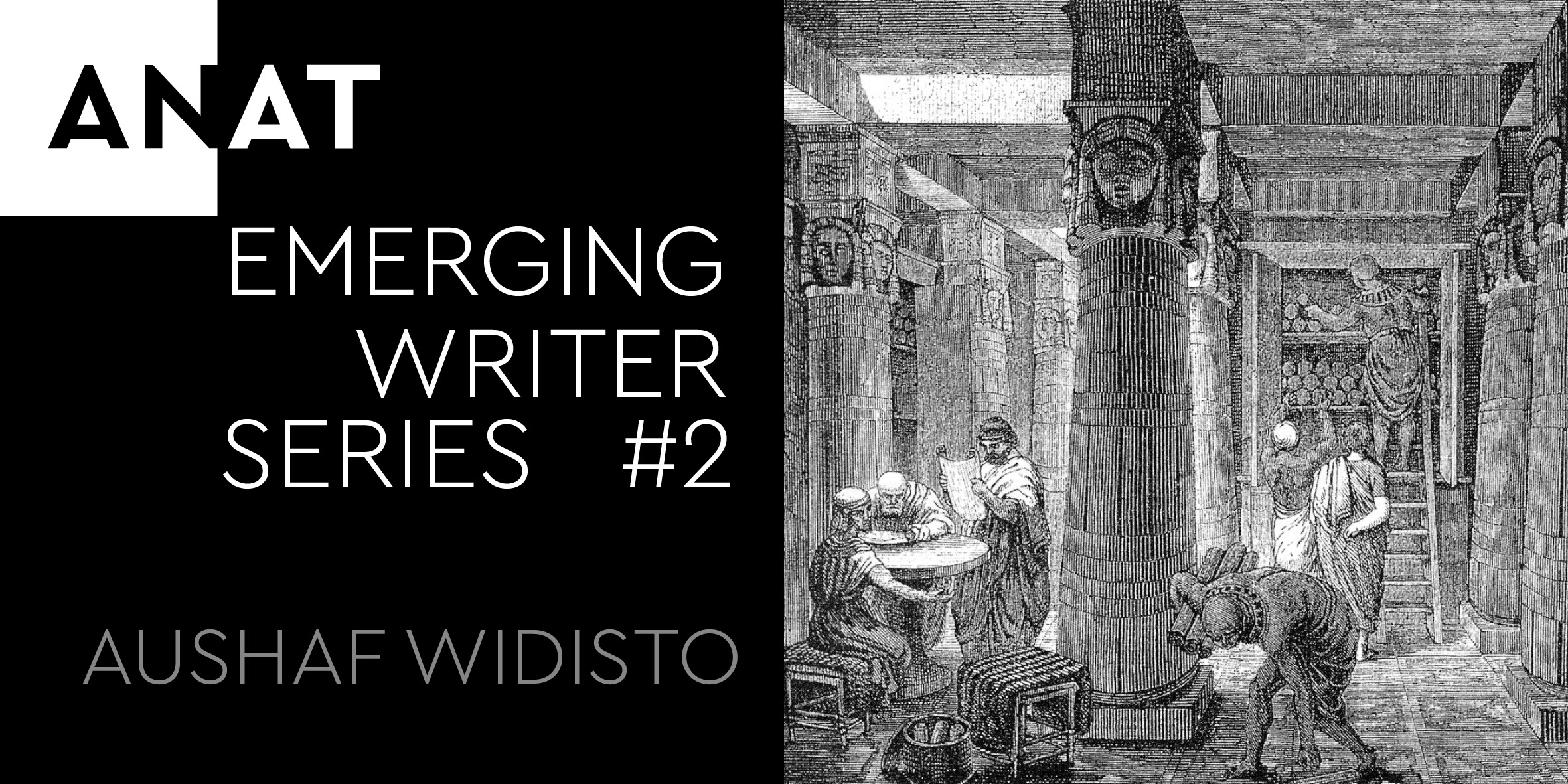
The Great Library of Alexandria by O. Von Corven (Source: Wikimedia Commons).
SPECTRAvision Episode 2: Machines Like Us, Cells Like Them
When the line between man and machines finally blurs, what will our world become?
In the special edition program, Artificially Intelligent Art, that previews the second episode of SPECTRAvision, Machines Like Us, Cells Like Them, this question is explored from the perspective of a machine artist. Driven by her curiosity, our machine artist interviewed an eclectic lineup of human artists whose work lies at the intersection of man and machine, examining the relationship between them and envisaging a world where they live in harmony and synergy.
I, as I’m sure many of you are, am already somewhat familiar with this futuristic world. After all, we’ve seen it plenty of times before in sci-fi movies like Star Wars and The Matrix. For many of us, these futures might seem fantastical and far-fetched, but really, they’re already here–only not in the grandiose form we imagine. In reality, they’re much closer to our day-to-day lives.
In Artificially Intelligent Art, we have seven human artists working to illustrate this brave new world for us, and these are five things I’ve learned from their stories.
Reading Post-Literacy
Books have become more available and accessible today than ever before. It’s arguably the best time in history to be a reader. After all, it’s never been this easy to satisfy our craving for literature.
The thing is, with this sheer ubiquity of printed and digitised books, it has become impossible for any single human to read them all. Our libraries, both physical and digital, will only become more and more saturated as we move forward. And in this kind of book-saturated future, how will we read? Even today, we already see people shifting from paperbacks to e-readers and audiobooks. Some don’t even bother to read whole books anymore, and simply opt to read summaries and second-hand accounts.
From Gutenberg’s printing press to Zuckerberg’s social network, we’ve seen how our ways of consuming, producing, and distributing information have transformed. And by extrapolating this arc of progress, our human artists Karen Ann Donnachie and Andy Simionato forecasted that, after a pre-literate past and literate present, one day we’ll enter a post-literate future.
In this post-literate world, the way we read will change yet again. Karen Ann and Andy speculated we’ll be assisted by machines in reading this overwhelming mass of books. Their artwork, The Library of Nonhuman Books, features an AI author who interprets existing books and rewrites their content however it sees fit. The results are then catalogued by algorithms, becoming a repository of book snippets they dubbed a new Library of Alexandria.
The Library of Nonhuman Books intends to challenge boundaries and recognise that, eventually, cultural production will become a fully hybrid and co-agentic process between man and machine. Writing and reading will no longer be the sole domain of humanity.
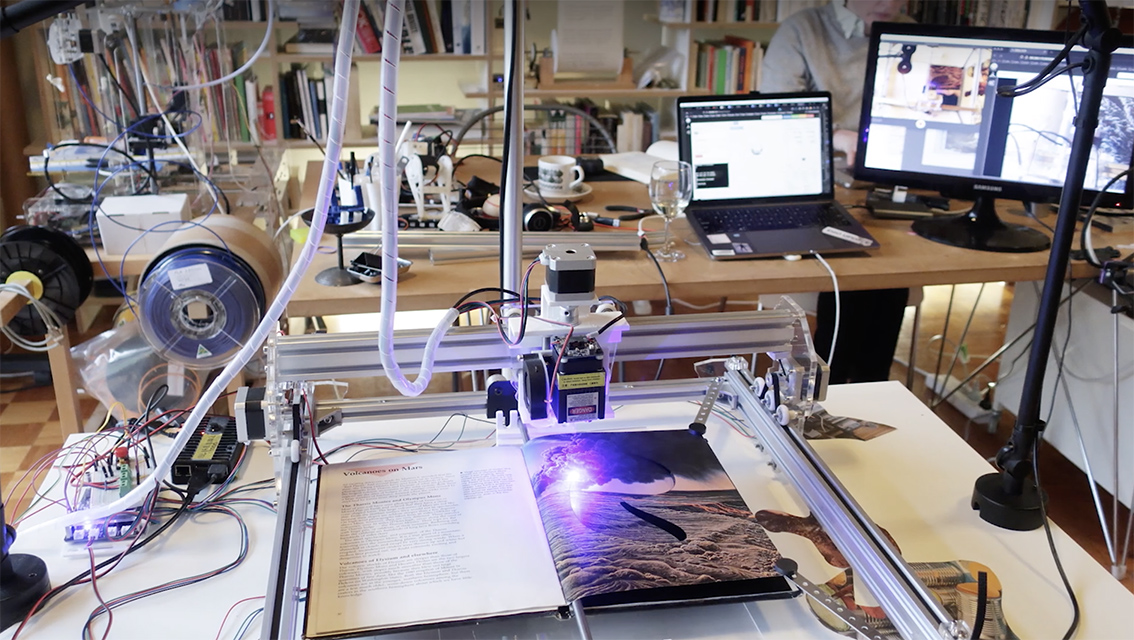
Still from Artificially Intelligent Art.
Revealing the Subtle
What’s the purpose of art? Dr Betty Sargeant, one half of the art-technology duo PluginHUMAN, sees art as an act of “future-culture-making,” which I interpret as, “walking into the future before it arrives and bringing their culture back to our present.”
Driven by this philosophy, Betty and her partner Justin Dwyer created CAPTURE, a project that explores the possibilities of carbon-neutral and carbon-negative art. It features generative computer animations of the microscopic qualities of PluginHUMAN’s compostable biopolymer materials, accentuating their subtle features and revealing them to the naked eye.
But the subtleties that Betty aims to reveal go further than just that of her materials, but also of herself, of us, of our society and our world. Much of her work is funded by public money, and thus entails a degree of responsibility. Her artmaking, then, attempts to reveal the subtleties of our world, by elevating less represented entities such as First Nations peoples, or even Mother Nature herself.
By highlighting the subtle splendour of their biopolymer materials, PluginHUMAN demonstrates that sustainable art can be just as (if not more) radiant and unyielding as its non-sustainable counterparts. Most importantly, it’s the only kind of art there will be in the future.
If humanity were to have any future at all, it’d have to be one where we’ve solved the climate crisis, wouldn’t it? Otherwise, there won’t be any future to speak of, much less to make a culture for.
It’s high time we cease highlighting the obvious. Let’s revel in revealing the subtle.
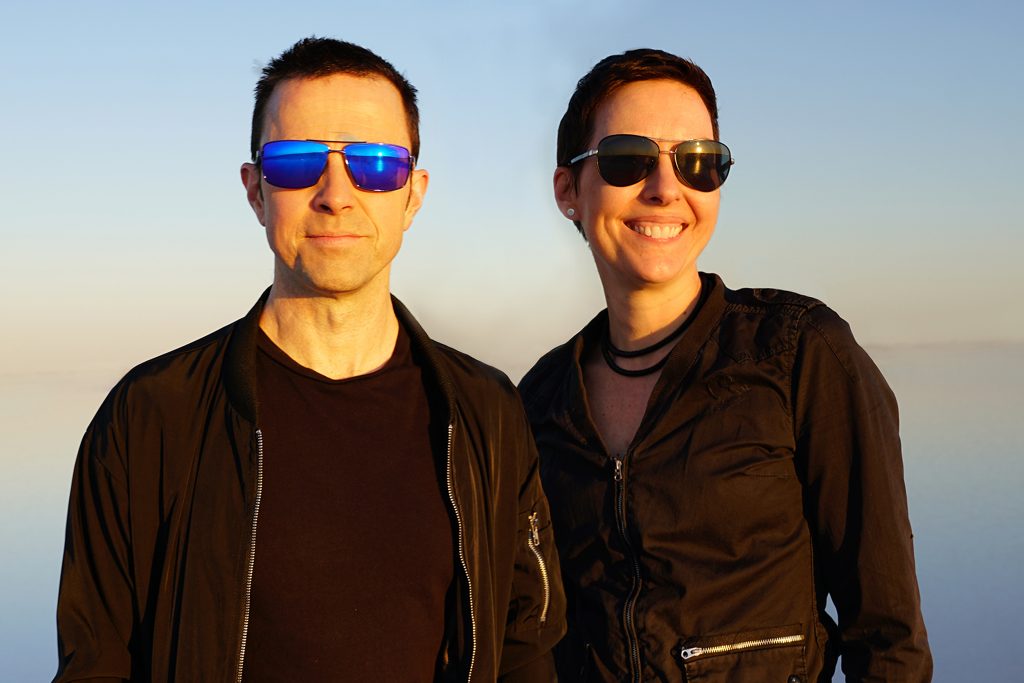
PluginHUMAN Betty Sargeant & Justin Dwyer. Image courtesy the artists.
Dismantling Binaries
A fish can’t see the water it’s swimming in, and likewise, we humans can’t see the air we breathe. Sometimes, the most obvious and tangible truths are invisible to our eyes. Yet they exist nonetheless.
In 93% Human, Helen Pynor and her collaborator Jimmy Breen used a scientific glassware condenser device to capture their shared breath sample and convert it from a gaseous state into liquid, rendering what’s normally imperceptible into visible form.
93% Human reveals that what we think of as a human is not as rigid as we thought. Through the DNA carried in our breaths, we share our existence and essence with others. And we don’t just share them with fellow human beings, but also with the myriad microbiomes living in our respiratory tracts. This indicates that the human condition is actually a multispecies condition.
Through her work, Helen explores the ontologies of life and dismantles binarised modes of thought entrenched in our present society. She prompts us to ponder, just how trivial is our bounded conception of a human being? Self and other, singular and plural, sentient and insentient–these binaries no longer mean anything when we realise our breaths alone carry 93% of who we are.
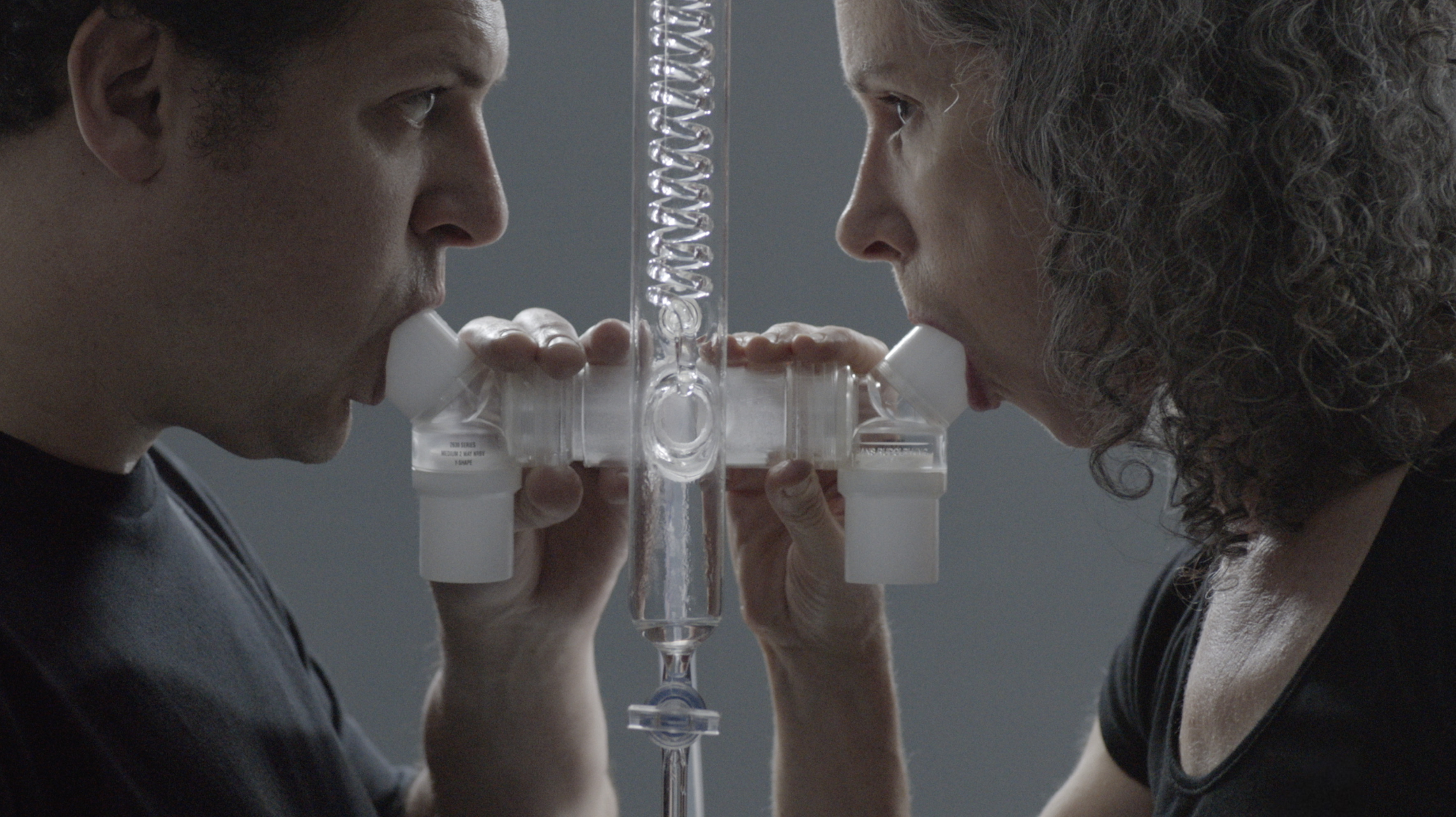
‘93% Human’, (detail) Helen Pynor, 2022, video, 10.20 min. This project was supported by ANAT, SAHMRI (South Australian Health and Medical Research Institute), and Queensland Museum for the Curiocity Festival. Image courtesy of the artist.
Deconstructing Humans
Water is water, whether an ocean or a droplet. Human is human, whether a group or an individual. We can deconstruct a droplet into smaller fragments and it’ll still be water as long as it has two hydrogen and one oxygen atoms. But how far can we deconstruct a human being until it stops being human?
In Bricolage, Guy Ben-Ary and Nathan Thompson attempt this deconstruction and take it a step further. They started by taking drops of blood, and then synthesised them with heart cells and silk, forming a kind of Frankensteinian automaton. It’s an artwork created using fragments of life.
Like other artworks in this episode, Bricolage also seeks to challenge anthropocentric worldviews. In addition to using human fragments as materials, Guy and Nathan deliberately designed Bricolage’s installation to be put overhead so the observers must look up to see the automata. This structural positioning is a metaphor that illustrates how humans are not always above other living beings.
Through their work, Guy and Nathan are proposing a multiplicity of contestable futures. And in all their speculations, they try to be playful while also aiming to generate philosophical discussions.
If we could deconstruct and reconstruct ourselves into entirely distinct beings, just how human are these beings? Just how non-human are we? What does “human” even mean, and does it even matter?
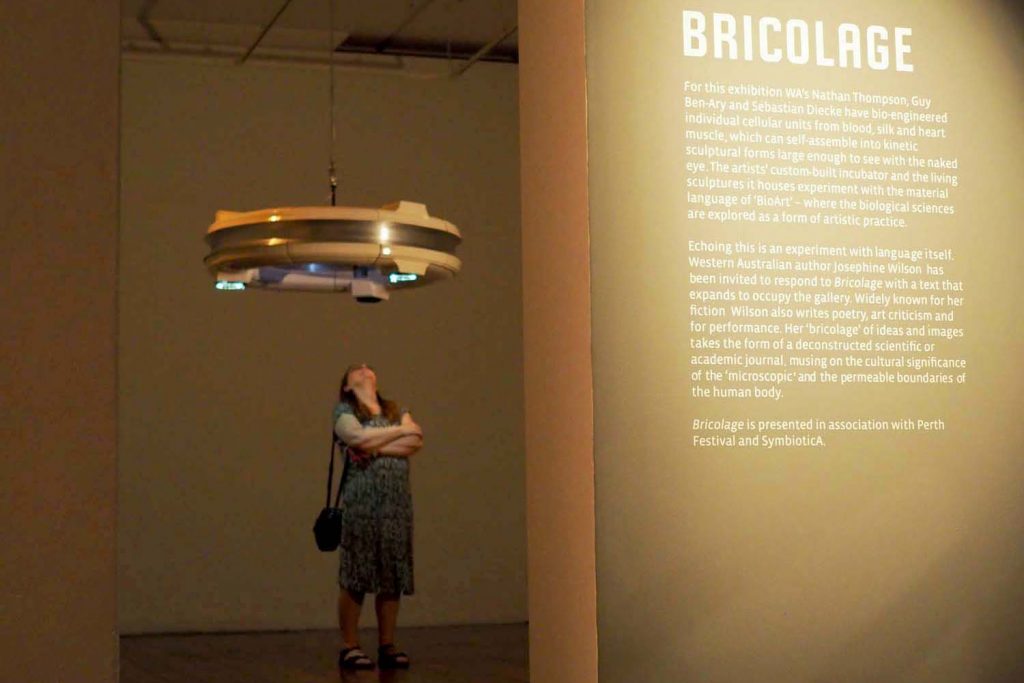
Guy Ben-Ary & Nathan Thompson, Bricoalge, Perth International Art Festival.
Assembling Avatars
Today’s youths are the first generation to simultaneously live two lives: offline and online.
Our predecessors may have two lives too, but theirs didn’t begin that way. They first existed as physical entities, and were later given the option to expand into the digital realm–but not us. We never really chose. We’re simply born smack-dab into that dual reality, without knowing any other way to live. To us, our digital selves are just as real as our physical selves.
Responding to this phenomenon, digital culture agency CLUB MEDIA created Maie, a digital avatar taking the form of a Chinese teenage girl. Maie is a transcendental being finding her place and voice in our world. Her existence explores the blurring boundaries between the physical and the digital.
Reggie Ba-Pe, representing CLUB MEDIA, expressed that Maie embodies how digital identities add another layer to the physical human. This phenomenon has long been apparent in the gaming space, where people adopt avatars to interact in a digital world. But recently, it has been accelerated by the advent of blockchain technologies like NFTs. Through Maie, Reggie and CLUB MEDIA explores what digital avatars do to cultures, and how it enables us to transcend race, religion, and gender.
The digital is not going away. It’ll only become more sophisticated–an alternate dimension with its own culture, community, and economy where we could be whoever we want and find new ways to get together. And in a world where a full-fledged Metaverse is finally realised, what kind of multilayered beings will we become? Will our two worlds continue to coexist, or will the digital replace the physical?
A frightening but exciting thought. Better start assembling your avatars.
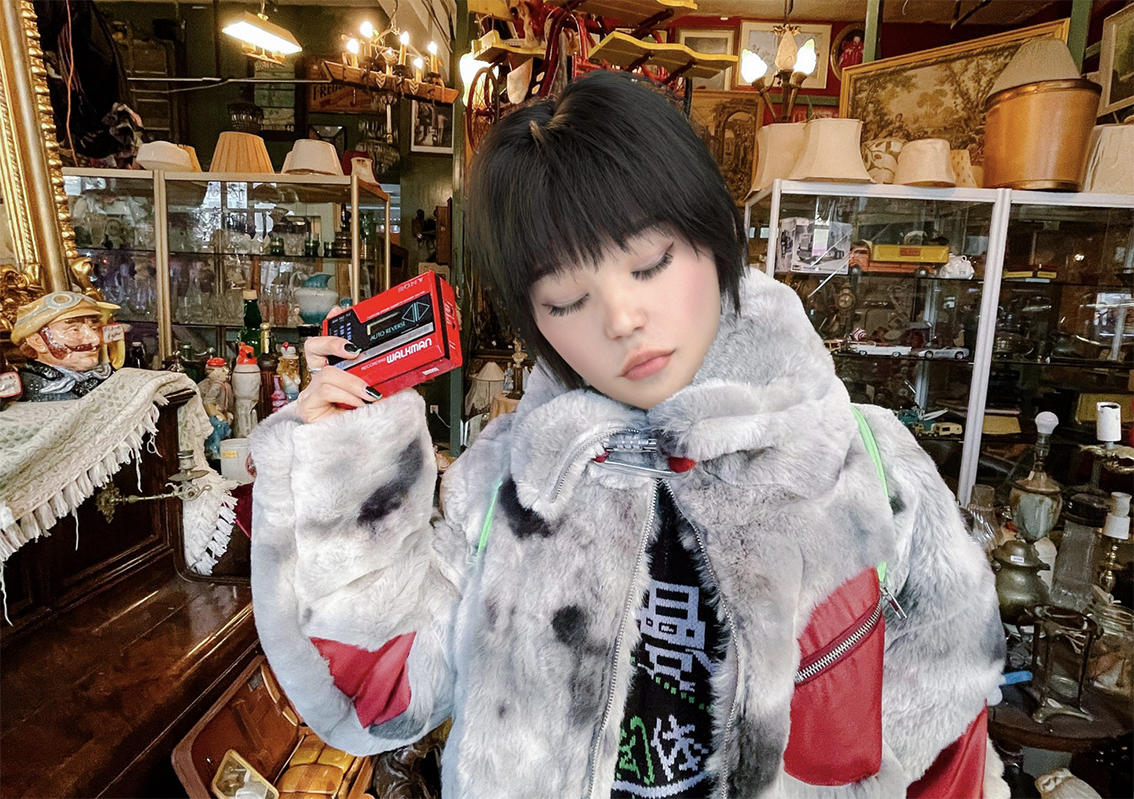
CLUB MEDIA, Maie, A multidimensional being transplanted into our reality in the form of a Chinese teenager.
Building Bridges // Breaking Walls
The way we read, the way we make art, the way we define our humanity and our boundaries of the self–all that has already changed, is still changing, and will continue to change in the future.
The future belongs to the ready, but who’s ever ready?
White and coloured, male and female, straight and queer–these binaries have polarised us for a long time, divided us into arbitrary factions, and put us perpetually at odds; and we’ve yet to reach true reconciliation. To make things more complicated, soon we’ll add one more binary: man and machine.
The brilliant minds in Machines Like Us, Cells Like Them help us prepare to face that complex future. And what other way is there to prepare, than to foster connection and understanding?
The way forward is paved in two steps: building bridges and breaking walls.
ANAT would like to acknowledge our Curatorial Circle who walked alongside David Pledger: Alex Kelly, Nina Sellars, Tony Briggs, Robert Walton and Zena Cumpston, and our producing team, SPECTRAvision Producer, Dearna Newchurch, SPECTRAlive producer, Madeleine Collie, and producers Zamara Robison, Damienne Pradier (Typecast), Sophia Marinos and Robbie McEwan (The Things We Made Next).
ANAT SPECTRA 2022 was proudly presented by the Australian Network for Art and Technology (ANAT) in partnership with the Science Gallery Melbourne and Faculty of Fine Arts and Music, University of Melbourne and together with program partners The Things We Did Next (TTWDNext), Typecast Entertainment, RMIT University and Leonardo.
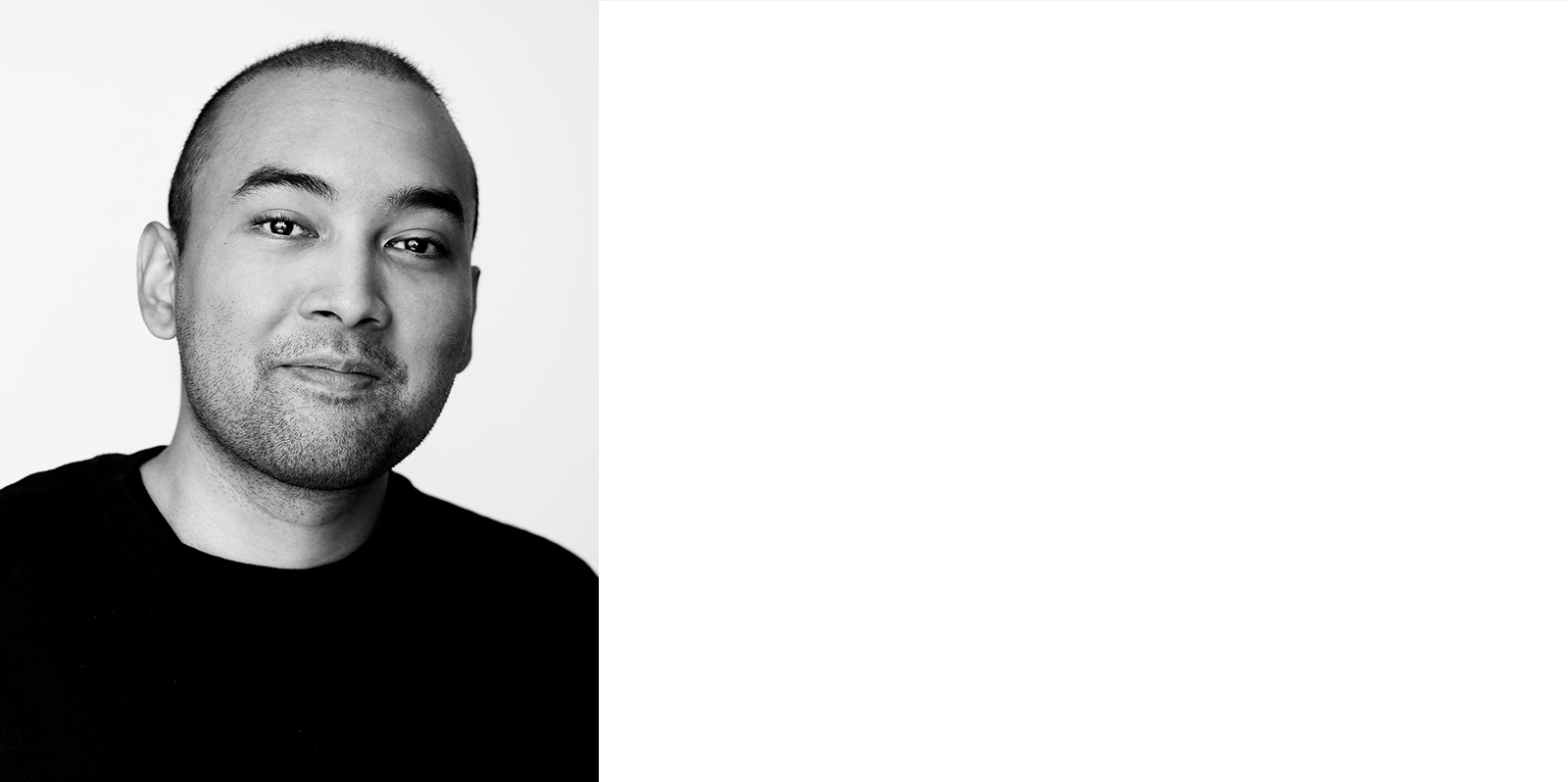
Aushaf Widisto, Emerging Writer and ANAT Arts Administrator
ANAT Arts Administrator Aushaf Widisto is an emerging writer and researcher from Indonesia. His writing has been featured in numerous publications across the web, both under his real name and pen name Adam Erland. After joining ANAT on an internship program, Aushaf begins his new part-time role as ANAT’s Arts Administrator in July 2022.
Having received a Bachelor of Urban & Regional Planning from Institut Teknologi Bandung and a Master of Cultural & Creative Industries from Monash University, Aushaf’s goal is to leverage arts and culture to create better cities and communities. Outside ANAT, he also works as a Research & Communications Assistant at Creative Economy. Previously, Aushaf worked with Asialink Arts.